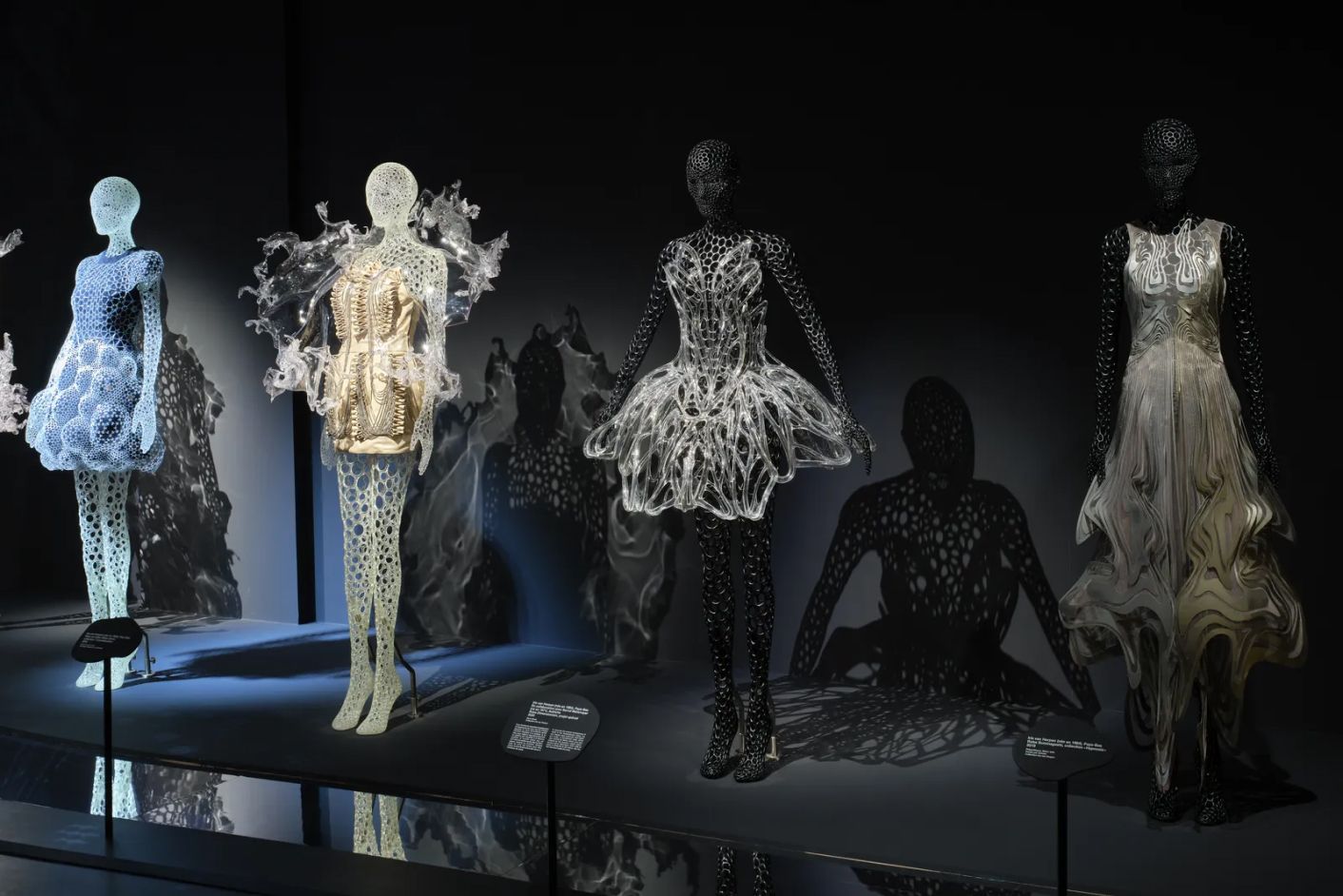Perspective on Intersection of Fashion and Technology

What were your overall impressions of the exhibition of Dutch fashion designer Iris van Herpen at the Musée des Arts décoratifs in Paris?
My first impression of the exhibition was sheer delight, akin to the ecstatic feeling when you see something incomprehensibly beautiful. The “Sculpting the Senses” project features over a hundred haute couture pieces by Iris van Herpen, complemented by works from renowned artists like Philip Beesley, the Collectif Mé, Wim Delvoye, Kate MccGwire, Damien Jalet, Kohei Nawa, Casey Curran, Rogan Brown, Jacques Rougerie and elements from the natural sciences, creating a unique resonance with historical pieces.
I agree with Iris van Herpen’s quote “Everything exists in nature. You just have to look carefully”. Her creations, described as fragile, sensitive structures and natural laces, reflect that belief.
As the author of the Cosmodreams exhibition project, which incorporates traditional forms of art and cutting-edge digital technologies, how do you view the integration of science, nature, and technology within Iris van Herpen’s work?
In my artistic journey, I find resonance with Iris van Herpen’s dynamic perspective on fashion as a vibrant, interdisciplinary language. The fusion of diverse fields – art, chemistry, dance, physics, architecture, biology, design, and technology – creates a tapestry that challenges traditional haute couture norms. What resonates deeply is her commitment to contemporary concerns, evident in the prioritization of eco-responsible manufacturing. In tune with contemporary issues, she has prioritized eco-responsible manufacturing in recent years, showcasing creations crafted from recycled plastic and 3D-printed cocoa beans. Her groundbreaking work led to a major 2012 exhibition at the Groninger Museum, Netherlands, solidifying her international acclaim as one of the most remarkable and innovative fashion designers of her generation.







As you mentioned earlier, the exhibition presents collaborations with various artists. Having recently partnered with Saudi fashion designer Yousef Akbar in the ‘Ethereal Echoes’ duo exhibition, showcasing a fusion of traditional and contemporary fashion, can you envision delving further into interdisciplinary collaboration in your future projects?
Definitely, collaborations fuel creativity, generate new ideas. The only difference I see for the next time is that it should not be a direct transfer of object (like a dress) on canvas, it should be deeper. In the context of fashion, I can create special elements, such as patterns, accessories, even models, due to my background in design. And vice versa, another artist can add some elements to my creation.
I find an example of van Herpen’s collaboration with David Altmejd perfect, when they created a kinetic garment.
Or when in 2000 Japanese artist Takashi Murakami collaborated with Louis Vuitton to produce a variety of screen and mixed media prints.
Considering the future, I eagerly anticipate engaging in collaborations that go beyond traditional boundaries, facilitating the integration of diverse artistic elements and the co-creation of truly distinctive and immersive art.
Were there specific pieces or themes from the exhibition that left a lasting impression on you?
The first thing you see entering the exhibition is a frozen ocean, the artwork of Collectif Me. Water holds a special place in Van Herpen’s art, drawing inspiration from its states and metamorphoses. Skeletons, air, and space further unfold as themes, capturing the essence of Van Herpen’s interdisciplinary approach. Van Herpen’s fascination with air, illustrated by her skydiving experience, is encapsulated in the Capriole collection. The exhibition includes a striking video of a model floating in the air towards the end. The final theme explores space, where Van Herpen collaborates with high-level athletes to push the limits of bodies and materials. The decision to combine fashion with extreme sports results in unexpected performances, challenging expectations, and continuing her exploration of a body competing with the elements.
As an artist and exhibitor, what organizational insights have you gained during the exhibition process?
I appreciate the curator’s exceptional work on the project, establishing meaningful connections with other artists, nature, and history. The thoughtful curation of the visitor’s journey through the exhibition is noteworthy, beginning with nature elements, reaching a climax with Iris van Herpen’s muses and her workshop (showing the creative process), and concluding with a denouement that explores themes of floating in the air and going beyond.
SOFI LITVINOVA | SPUTNIK PARTNERS